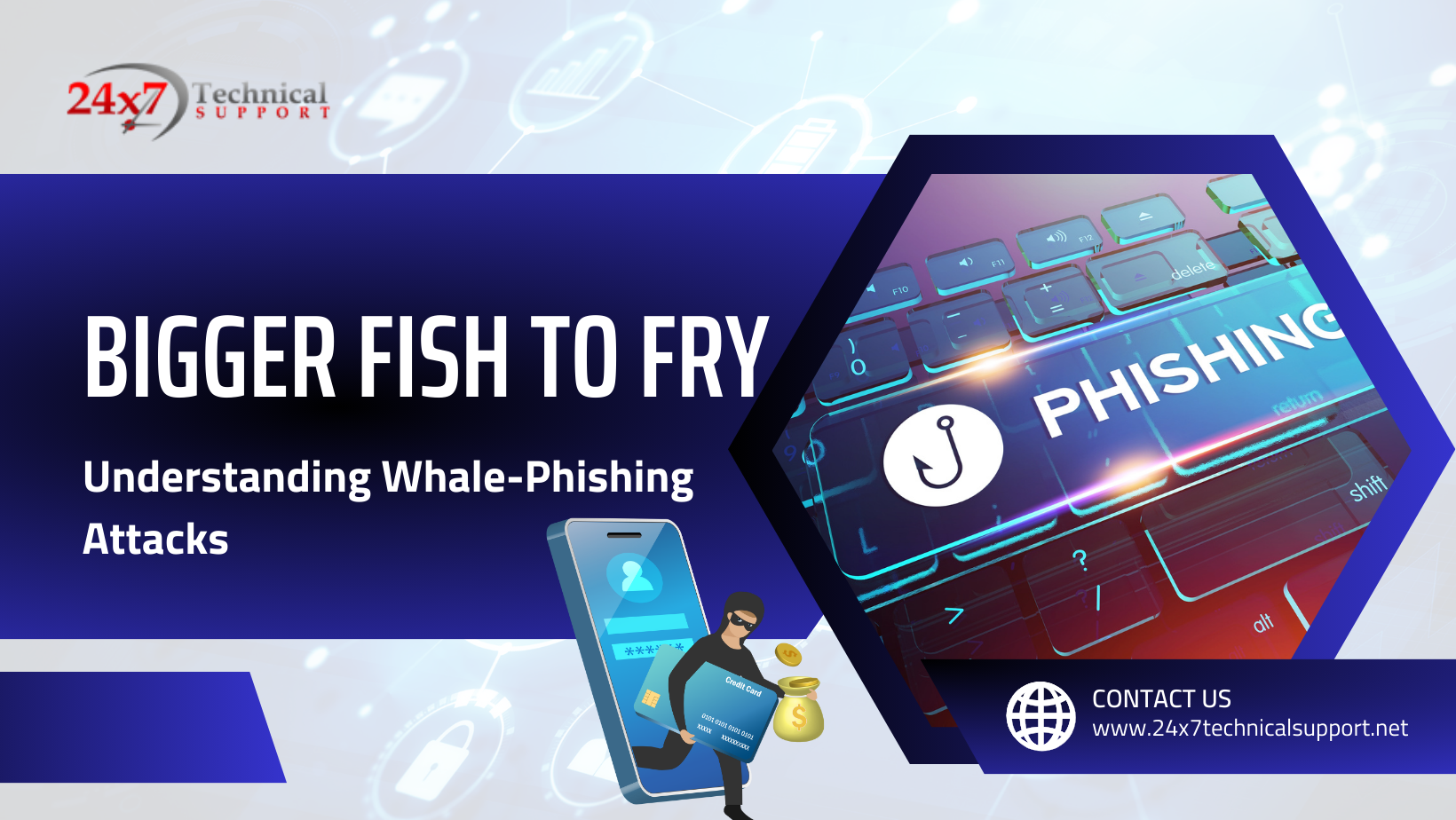
1. Introduction
In the ever-evolving landscape of cyber threats, one term that has gained notoriety is “whale-phishing.” This sophisticated form of cyber-attack targets high-profile individuals within an organization, aiming to gain unauthorized access or extract sensitive information. Understanding the mechanics and motivations behind whale phishing is crucial for safeguarding against these potentially devastating breaches.
2. What is Whale-Phishing?
Whale-phishing, also known as “spear-phishing,” is a targeted cyber-attack technique that focuses on senior executives, high-ranking officials, or individuals with significant influence within an organization. Unlike traditional phishing attempts, which cast a wide net, whale phishing is a highly personalized approach.
2.1 The Anatomy of a Whale-Phishing Email
A whale-phishing email is meticulously crafted to appear legitimate, often impersonating trusted contacts or utilizing information gathered from social media and public sources.

3. How do Whale-Phishing Attacks Work?
Whale phishing attacks typically begin with extensive reconnaissance. The attacker gathers information about the target’s professional life, interests, and contacts. This information is then used to craft a convincing message or email.
3.1 The Psychological Element
Whale phishing leverages psychological tactics, such as urgency or fear, to prompt the victim to take immediate action, often by clicking a malicious link or downloading an infected attachment.
4. The Motivation Behind Whale-Phishing
The primary motivation for whale-phishing attacks is often financial gain, industrial espionage, or gaining a competitive advantage. Attackers may also be motivated by political or ideological reasons.
4.1 High Returns for Attackers
Successfully breaching a high-profile target can yield a substantial payoff for the attacker, making the effort invested in reconnaissance and crafting the attack worthwhile.
5. Notable Whale-Phishing Incidents
Several high-profile organizations have fallen victim to whale-phishing attacks, resulting in significant financial losses and reputational damage. Understanding these incidents can shed light on the evolving tactics used by cybercriminals.

6. Red Flags to Identify Whale-Phishing Attempts
Recognizing the signs of a whale-phishing attempt is paramount in preventing a successful breach.
6.1 Unusual Requests for Sensitive Information
Legitimate contacts within an organization rarely make sudden and urgent requests for sensitive data via email.
6.2 Discrepancies in Email Addresses or URLs
Carefully scrutinize email addresses and hyperlinks for any deviations from the norm.
7. Protecting Yourself and Your Organization
Mitigating the risk of whale phishing requires a multi-faceted approach involving technology, education, and policy implementation.
7.1 Multi-Factor Authentication: A Critical Defense
Implementing multi-factor authentication adds an extra layer of security, making it significantly more challenging for attackers to gain unauthorized access.
7.2 Employee Training and Awareness
Educating employees about the dangers of whale phishing and providing regular training sessions can fortify the human element of your organization’s defense.
7.3 Regular Security Audits and Updates
Frequent security audits and updates of software and systems are vital in staying ahead of evolving threats.
7.4 Incident Response and Reporting
Establishing clear protocols for reporting suspicious activity and responding to potential breaches is essential in minimizing damage.
7.5 Collaborative Efforts in Cybersecurity
Sharing threat intelligence with industry peers and government agencies can provide valuable insights into emerging threats.
8. The Future of Whale-Phishing: Emerging Trends
As technology advances, so do the tactics employed by cybercriminals. Staying informed about the latest trends in whale phishing is crucial for maintaining robust cybersecurity.
9. Conclusion
Whale phishing represents a significant threat to organizations worldwide. By understanding the methods used by attackers and implementing comprehensive security measures, individuals and organizations can significantly reduce their vulnerability to these targeted attacks.
Visit our website for 24×7 monitoring and dedicated support.